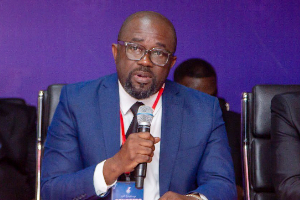Effective Seismic Risk Reduction: The Starting Point
Summary:
This last (sixth) article brings to a close the series on earthquakes and their related impacts on civil society, with particular reference to the Accra metropolis. The overriding argument made by the series is that Accra’s seismic risk is real, and its reduction must be seen as a key developmental goal. This article goes on to stress this fact and proposes a number of important steps that are necessary to place the country at the beginning of the long and arduous road of seismic risk reduction.
Introduction:
Seismic risk is the product of the likelihood of an earthquake event and the exposed value and the vulnerability of existing infrastructure. Man certainly has no control over Mother Nature. As a result, responsible societies have two options: vacate areas that are earthquake-threatened, or build in such areas a society that is resilient to the effects of an earthquake. In actual fact, a third “do nothing” option exists, however, this option could have serious ramifications and should be chosen with careful consideration, and not as a result of mere ignorance. The goal of this series has therefore been to help inform the general public, and in particular those in the Greater Accra Metropolitan Area (GAMA), on earthquake related issues.
It has been noted in the series that due to rapid uncontrolled urbanization, the seismic risk of earthquake-threatened cities in the developing world has been on the increase. In the global quest to tackle this problem, Accra is grossly lagging behind. This is evident from a study on risk reduction strategies of earthquake-threatened cities in the developing world. The study found that all had at least undergone some form of a detailed seismic hazard assessment. Sadly, apart from a recent preliminary study, no such study has yet been conducted for the GAMA area. From this researcher’s point of view, in the race to reduce seismic risk, we are not yet at the starting blocks to even think of running.
Blessing or a Curse?:
The laissez-faire attitude towards seismic risk reduction could be attributed to many factors including the time since the last destructive earthquake, and a lower level of seismic hazard compared to other hotspots around the world. Although a blessing, this could in actual fact turn out to be our demise, if nothing is done about the level of our exposed vulnerability. The question we should be asking ourselves is: One, do we have a history of past destructive earthquakes? Two, are our seismic zones active? If the answer to both questions is the affirmative, then we have a problem which we should be concerned about. Unfortunately, this is the case and should be everyone’s concern. The well-to-do in society who do not usually face the brunt of most natural disasters should be all ears, because they are as equally at risk as the poor, and maybe if not more, since most live or work in heavy concrete buildings.
The case of Haiti is an example of a country with a lower seismic hazard than other hotspots around the world, where this blessing has turned into its demise. The country is now virtually at the mercy of the world community. With the myriad of problems faced by the country, their leaders considered issues such as armed robbery and disease control as more important than the issue of protecting themselves against nature’s desire to “release tension”. Not that the fight against armed gangs, malaria or AIDS is wrong, but seeing these as the main threats faced by a society that has a history of destructive earthquakes is foolhardy, and certainly not good governance!
Do Nothing or Do Something?:
If nothing at all, a lesson that can be learnt from the Haiti and Chile earthquakes is that the impact earthquakes have on a society can be significantly reduced by effectively preparing for them. An additional lesson is the fact that the “do nothing” option is risky and expensive, and can reduce a country to the status of a beggarly nation. Imagine all the progress we have made so far as a nation, all this could be thrown to the wind in a single day. It is important therefore that as a nation, we ask ourselves the all important question: are we prepared for the consequences of the “do nothing” option?
One would hope that as a country we would choose the option to build a community that is resilient to earthquakes. This, however, calls for radical changes in the way do things. With limited resources channelled towards tackling a myriad of problems, with corruption rife and laws broken with impunity, with government institutions lacking the capacity and will-power to enforce laws, the idea of seismic safety at best seems to be a mirage. Nonetheless, there is good news for the ever-positive; our situation is not unique, other developing countries have the same problems, and are dealing with it. We therefore do not need to resign ourselves and accept the fatalistic “do nothing” option: WE CAN DO SOMETHING!
The Ten Starting Measures:
The following is a list of ten important mitigation measures that are deemed necessary to help set us on the path to seismic safety. These measures affect the whole spectrum of Ghanaian society and are considered just the first steps in creating a society resilient to earthquakes.
1: First and foremost, government and civil society must recognize and accept Accra’s seismic risk as an issue that requires committed attention and resources. The issue must be given its rightful place among key development goals such as the control and eradication of AIDS and malaria, and the reduction of poverty in the country. This is considered good governance since we would be tackling problems across the entire spectrum of disaster risk.
2: It is important that government enact policies on the expansion and growth of the GAMA metropolis. Government and local authorities cannot allow the metropolis to keep expanding the way it is. Among others, the former Vice Chancellor of KNUST, the late Prof. Kwesi Andam warned that Accra is sitting on a time bomb, and recommended the capital be moved from Accra. It is important that government takes heed to such warnings, and leads the way in relocating parts of its administrative functions to other cities. Based on this, the author finds recent news about a deal with the Koreans to further expand the city as a move in the wrong direction. If government desires to help reduce the housing problem in Accra, more innovative approaches should be found. For example, incentives could be given to owners of old houses to have them torn down to be replaced by high-rise buildings.
3: The need for a seismic code for the country is paramount. It is gratifying to note that the Council for Industrial and Scientific Research (CSIR) recently stated that such a code is soon to be published. Earthquake engineering is a dynamic field that keeps changing, it is therefore important that such a code be based on recent available knowledge in the field. Also, it is of utmost importance that a seismic code for the country covers non-engineered construction, e.g., adobe houses. This is because past earthquakes around the world have shown such construction to be particularly vulnerable to earthquakes. Cost-effective earthquake-resistant construction for such buildings has been developed in countries such as India, Iran, Peru and Nepal; it should be possible to learn from their experience.
4: A critical part of any seismic code is the seismic micro-zonation map of the region. An initial seismic code developed for the country by the Building and Road Research Institute (BRRI) had such a map. This was, however, not based on the results of a detailed seismic hazard assessment study. Fortunately, a preliminary study based on a deterministic scenario earthquake approach has been recently completed by Dr. Paulina Amponsah of the Seismic Data Center of the Ghana Atomic Energy Commission. The state-of-the-art is, however, to develop seismic hazard maps from a probabilistic seismic hazard assessment (PSHA) study. In addition, the results of a PSHA study can be used in probabilistic seismic risk analysis studies to help quantify expected losses from an earthquake event. This information helps decision-makers by presenting a clear picture of the level of seismic risk faced by the community. This study must be given priority because other mitigation measures depend on it.
5: An area that needs action on the part of government and that of the ordinary individual is the need to seismically retrofit existing buildings. As a matter of urgency, government should fund studies into the seismic assessment of the safety of critical infrastructure in the metropolis. For example, all the major hospitals, fire stations and National Disaster Management Organization (NADMO) operation centers in the GAMA area should be assessed. As happened in Haiti, non-functioning hospitals and post-disaster operation centers virtually cripple post-disaster response activities. Government and local authorities should also consider coming out with a policy that encourages or even forces building owners to have their houses assessed, and if need be, retrofitted.
6: The need for a well-planned emergency-preparedness program cannot be over-emphasized. This is a task that NADMO alone will certainly not be able to handle; it needs the contribution of all stakeholders. It is gratifying to note from the 2009 Country Report on the Hyogo Framework for Action that NADMO has been engaged in discussions with other disaster management stakeholders. One hopes that emergency-preparedness for a major earthquake is a part of these discussions. Events like the 2008 “Ahoboa” exercise should be the norm, and not the exception. In particular, NADMO should be able to cooperate with the media to keep earthquake-preparedness awareness on the minds of the average person. It is important to state that effective emergency-preparedness requires considerable scientific, logistical and administrative input. NADMO must therefore be aggressive in ensuring it has this kind of backup support; the 2009 Country Report showed it to be lacking in some of these areas.
7: To achieve any success in promoting seismic safety, the building permit and building code enforcement procedures must be critically reviewed. It is no secret that the current system has no teeth and is not working. The current traditional approach where local government is fully responsible for the process is practised in many, if not most countries. It is, however, interesting to note that whereas the systems works well in most developed countries, the system simply does not work in many developing countries. It is just astonishing to read reports on studies done in India, Turkey and Nepal and find the SAME problems faced in Ghana also faced there. In fact, one cannot just help laughing when case studies are cited that make it look as if the writer is referring to Ghana. This points to a problem that is systemic in nature, and needs to be dealt with innovatively at this level. An approach to tackle this problem is for local government to outsource technical tasks associated with the building permit and code enforcement process to private building design firms with proven expertise. Such firms would then be offering the public a professional service in return for payment, and would be fully liable. Local government could then concentrate on administrative issues related to the building permit and code enforcement process. Those opposed to this approach could cite cost increases in the process as a barrier. However, what is more expensive? Large scale damage in a major earthquake, or a few more cedis paid to ensure quality. Another practice that exists in other countries is the requirement for design calculations to be part of the package required for a building permit. This would fit perfectly with the proposed approach and would help weed out unqualified personnel.
8: Before a number of the proposed measures are put in place, it is important that government task the Engineering and Architects Council to assemble a panel of experts that would ensure that all important infrastructure in the GAMA area are built to a minimum level of seismic resistance. This is because it is far cheaper to build properly now, than wait to seismically retrofit a structure in the future. This review panel could in the future act in an oversight role when all the necessary systems and structures for seismic safety have been put in place. A particularly important role such a body can play is to report to government on the state of the entire building design industry and regulatory process.
9: The need for the training and re-training of our engineers, architects, technicians and skilled workforce in earthquake-resistant design and construction is an understatement. This is one key area that cannot be overlooked. Currently, earthquake engineering and engineering seismology are not part of the undergraduate curriculum of any of our third-cycle institutions. Also, no established graduate programs or continuing education programs are available. This should be a priority of government and the Engineering and Architects Council. Countries such as India and Nepal realized this mistake after devastating earthquakes and are currently making changes; we should follow suit.
10: Lastly, and in the author’s view, a major step towards ensuring the potential for success in reducing seismic risk is the need for an organization that would champion the cause of earthquake-risk reduction. The author believes that the formation of such an organization is imperative if the GAMA area is to witness any sustained improvements in seismic risk reduction. Similar organizations currently exist that champion the reduction of health disasters; notable among these are the National Malaria Control Program and the Ghana AIDS Commission. Such an organization would be multi-disciplinary in nature and would focus only on seismic safety. An example of such an organization is Nepal’s National Society for Earthquake Technology (NSET). The sole mandate of NSET is the promotion of seismic safety. The impact it has had on the Nepal’s seismic risk reduction program is heralded in Nepal and in the international technical community. Ghana must certainly adopt this best practice in seismic safety.
Conclusions:
In summary, as a responsible society, the least that can be done is to safeguard and protect the development we have earnestly toiled for. This can only be done by committing to a mitigation-oriented disaster management program. Finally, in committing to seismic risk reduction, in the words of Dr. F. Bendimerad, Chairman of Earthquakes and Megacities Initiative, an international organization dedicated to seismic risk reduction in developing countries, “what we gain is the peace of mind that when the earthquake comes, we would know that we would have accomplished our obligation to protect our families, our neighbours and our communities. The worst is to know that we could have done something, and did not do it.”
Nii Kwashie Allotey, Ph.D., P.Eng., Email: nii50@inbox.com
Opinions of Sunday, 9 May 2010
Columnist: Allotey, Nii Kwashie














